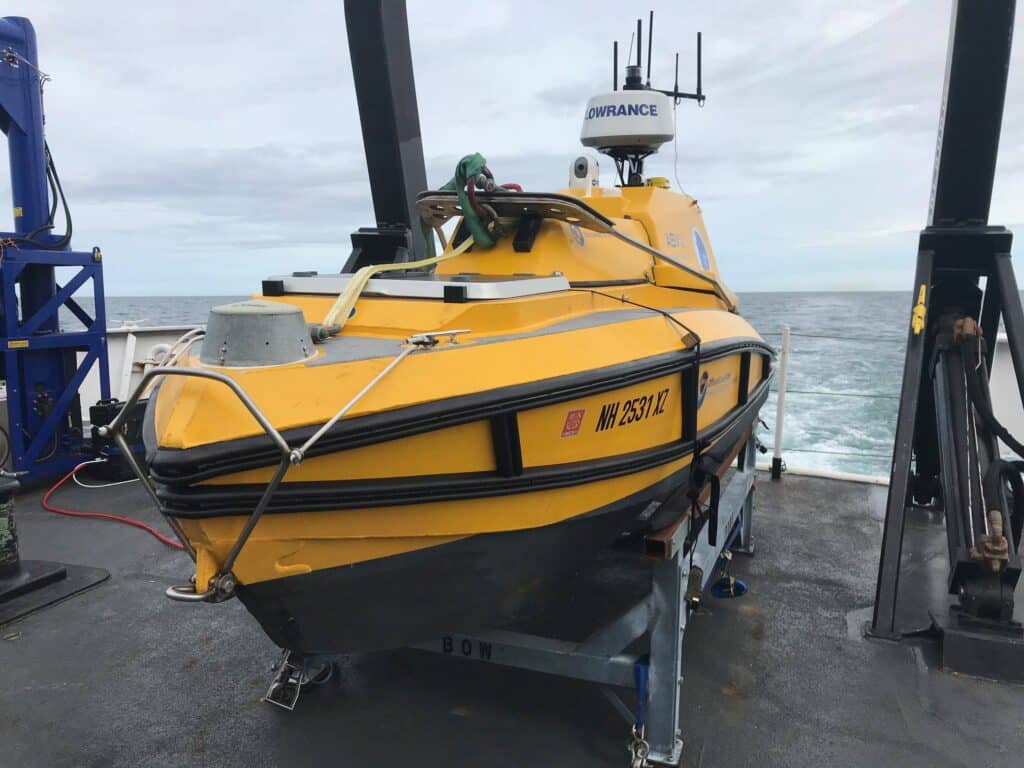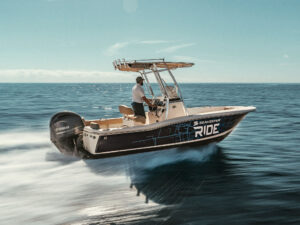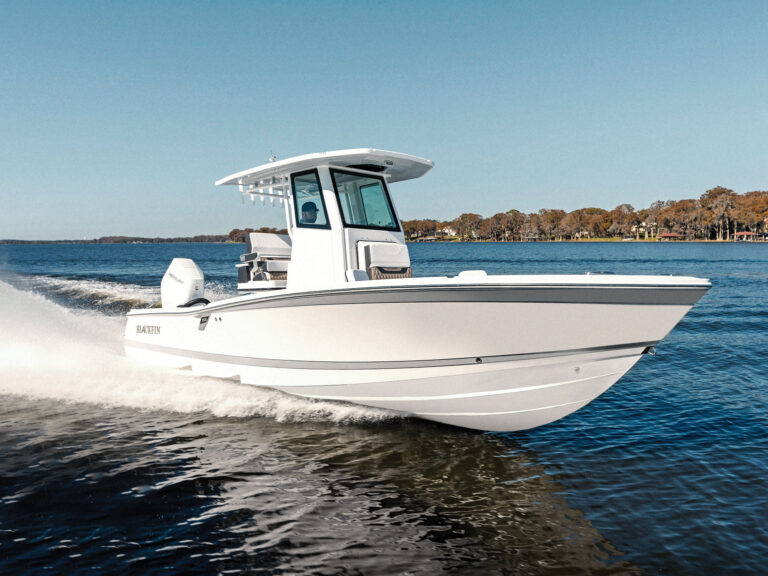
“Sécurité, sécurité, sécurité. This is Coast Guard Sector Long Island Sound,” came the call over the vessel’s VHF radio, tuned to channel 16. “Boaters in the vicinity of Fort Totten should be on lookout for a partially submerged telephone pole posing a hazard to navigation. Use caution when transiting the area.”
In my part of the world, these warnings are commonplace after a particularly high tide that dislodges debris from the shoreline. Felled telephone poles, fallen trees, and even the occasional oil tank seem to make their way out into the bay after a full moon. But there’s a new variety of potential hazards floating on both the near- and offshore grounds: autonomous vessels.
Drones Everywhere

Autonomous vessels are increasingly being employed to perform research for a number of industries. These uncrewed vessels can gather real-time weather and sea surface condition data, take high resolution scans of the bottom to create maps, and provide valuable security info. And they do so without the aid of humans, which lets them work around the clock.
Unmanned vessels can be broken into two main types, underwater or surface vehicles. According to the Woods Hole Oceanographic Institution, underwater autonomous vessels, or AUVs, are “programmable, robotic vehicles that, depending on their design, can drift, drive, or glide through the ocean without real-time control by human operators. Some AUVs communicate with operators periodically or continuously through satellite signals or underwater acoustic beacons to permit some level of control.”
Uncrewed surface vehicles, or USVs, operate on the water’s surface. NOAA’s Ocean Exploration page says they “roam the ocean’s surface like boats, collecting oceanographic and atmospheric data, but without a human aboard. Operators at sea or on shore can remotely control USVs or program them to conduct pre-planned missions and make decisions with minimal real-time human input.” They can utilize various forms of propulsion, including sail. Saildrones’ USVs achieve speeds of 2 to 4 knots using wind and solar power.
Maintain a Proper Lookout
Rule 5 of the Convention on the International Regulations for Preventing Collisions at Sea (better known as COLREG) requires that “[e]very vessel shall at all times maintain a proper look-out by sight and hearing as well as by all available means appropriate in the prevailing circumstances and conditions so as to make a full appraisal of the situation and of the risk of collision.” Many consider this the primary rule of seamanship, myself included. With all manner of unmanned craft on the high seas, this is as important as ever.
Though anglers are often surprised by the unmanned vessels, their operators do their best to make their presence known. Surface vehicles are typically equipped with Automatic Identification System (AIS) transponders, navigation lights, radar reflectors and cameras. You can check the Coast Guard’s Local Notice to Mariners to learn about scheduled operations using the ocean-borne drones. And stay alert whenever you’re out there.
Have you ever encountered one of these unmanned vessels out on the water? Or anything else outside of the ordinary (square grouper excluded)? Let us know in the comments, or by dropping us a line at editor@saltwatersportsman.com. We’d love to see your pictures!









